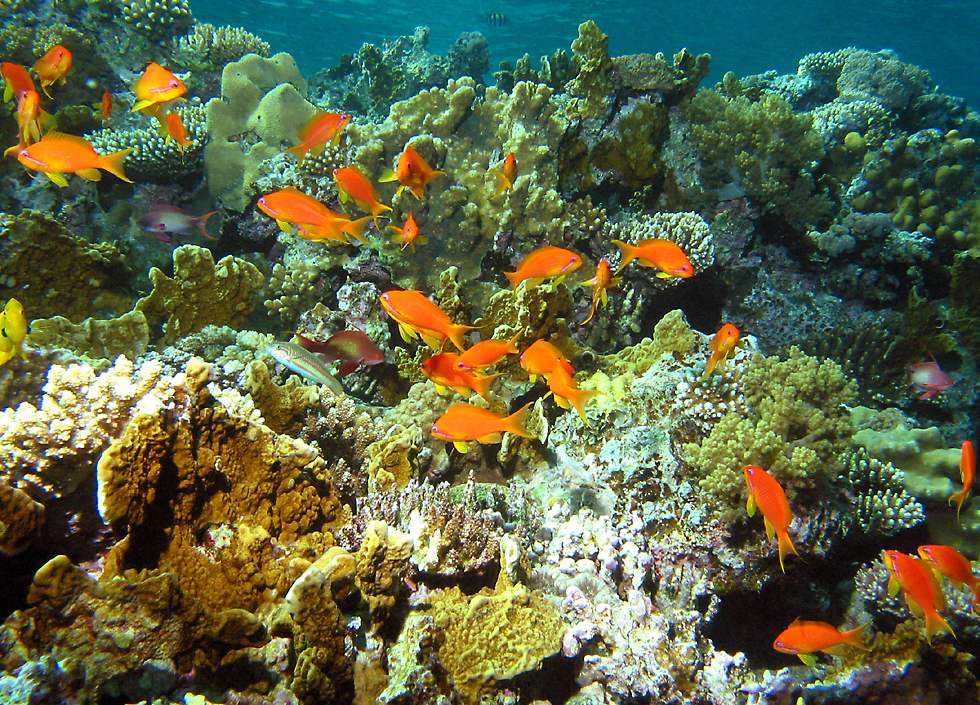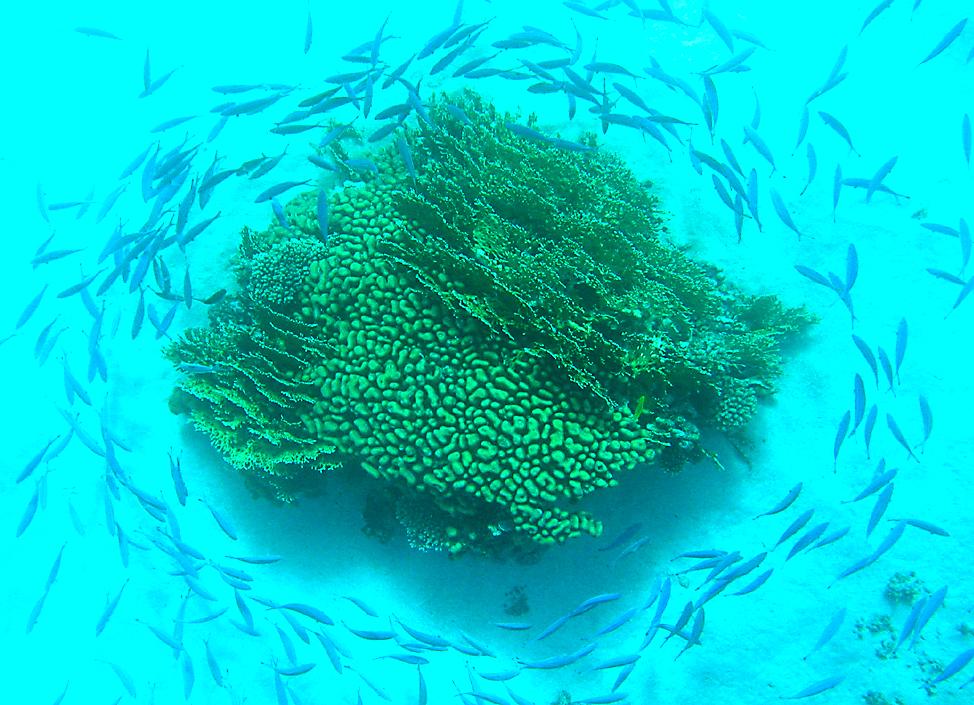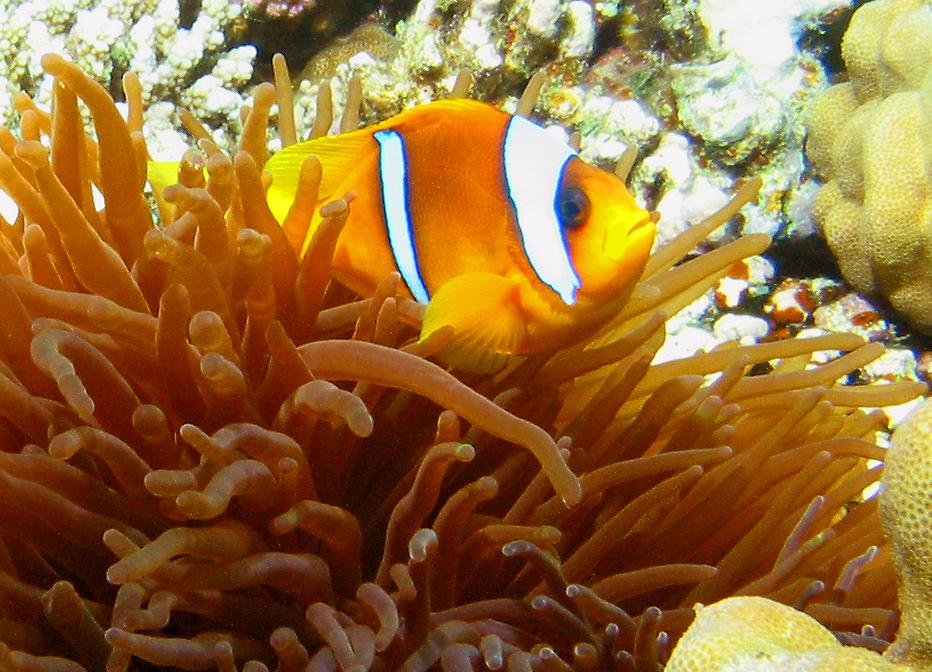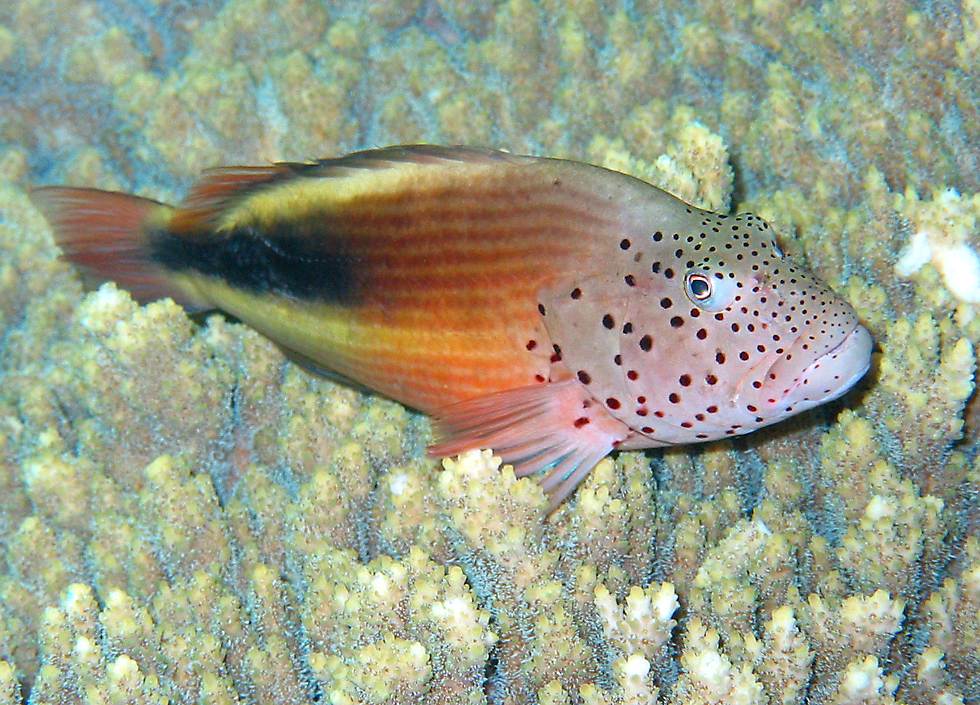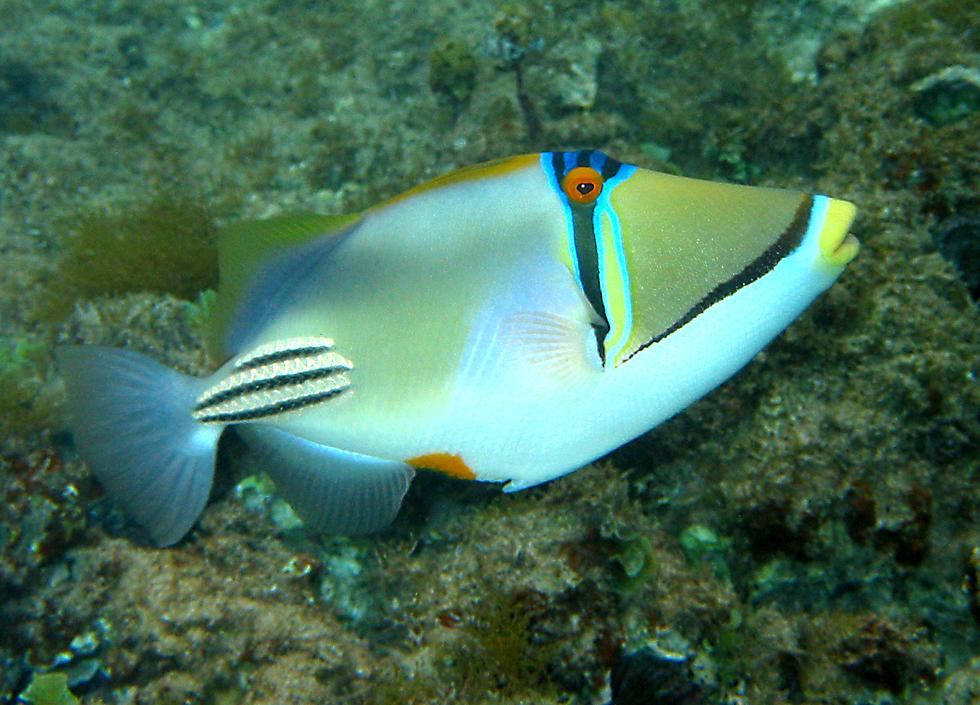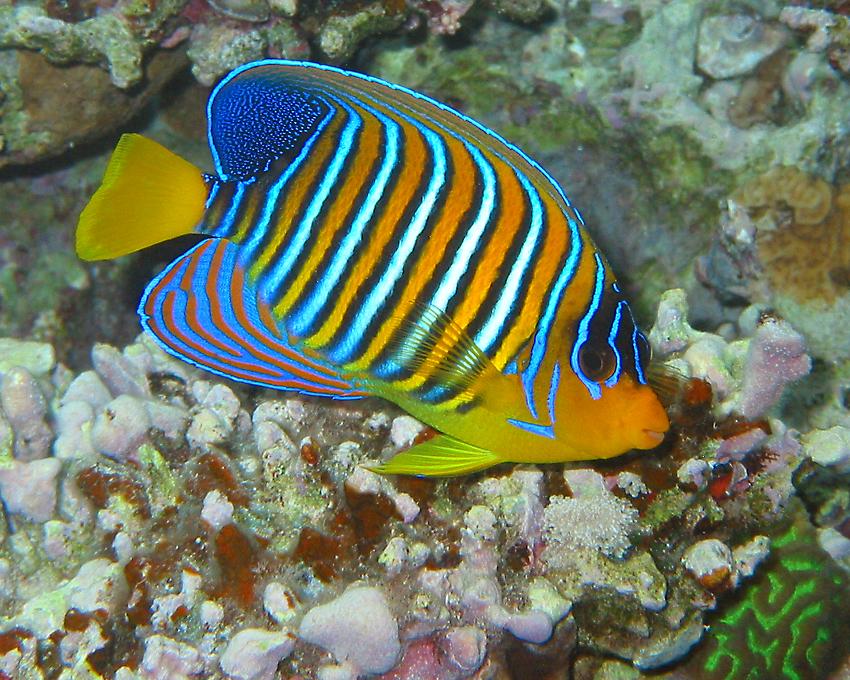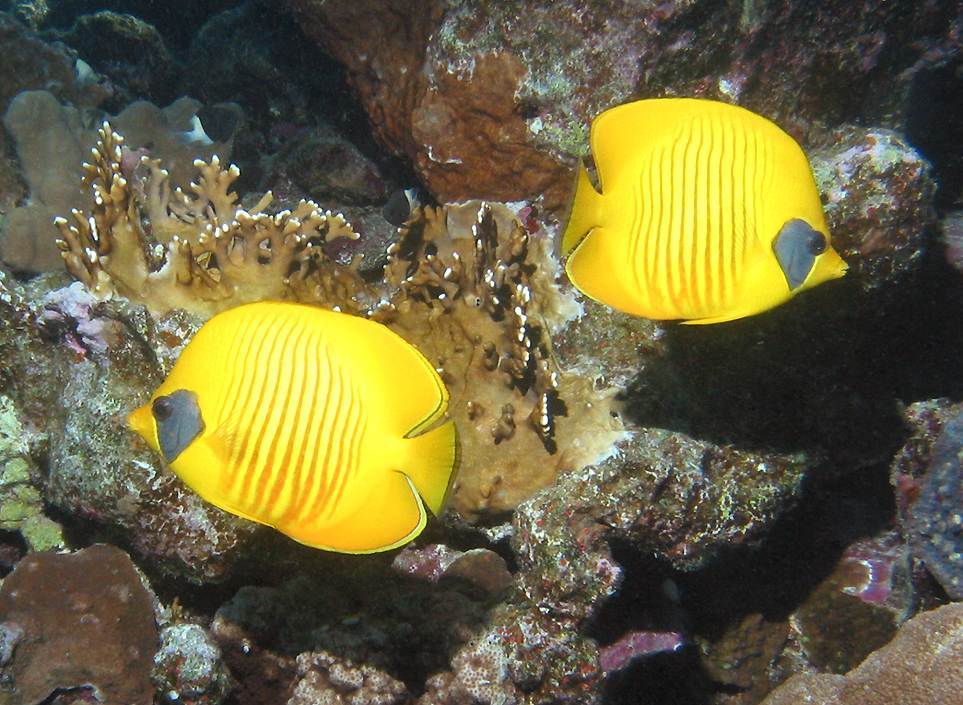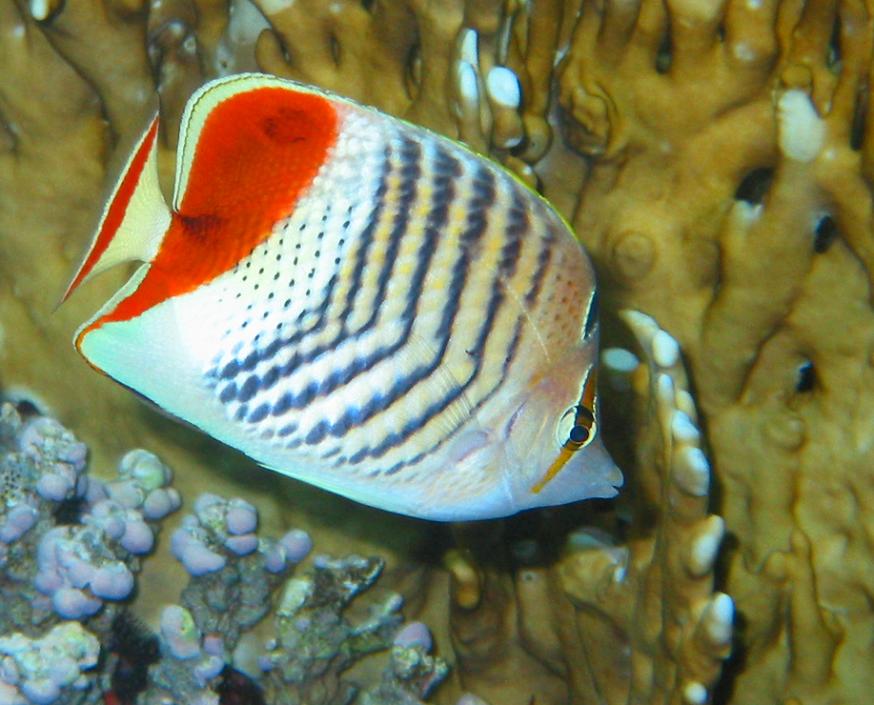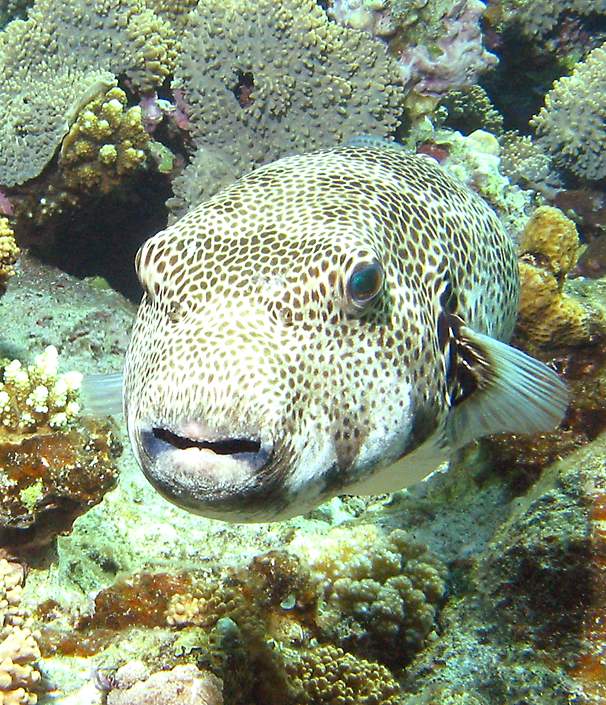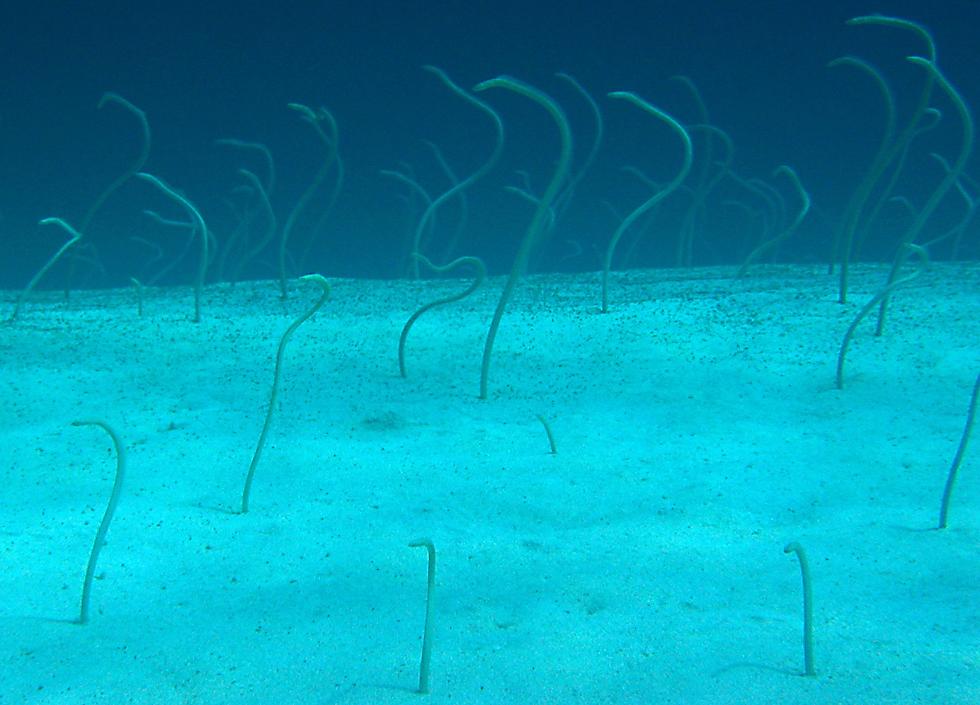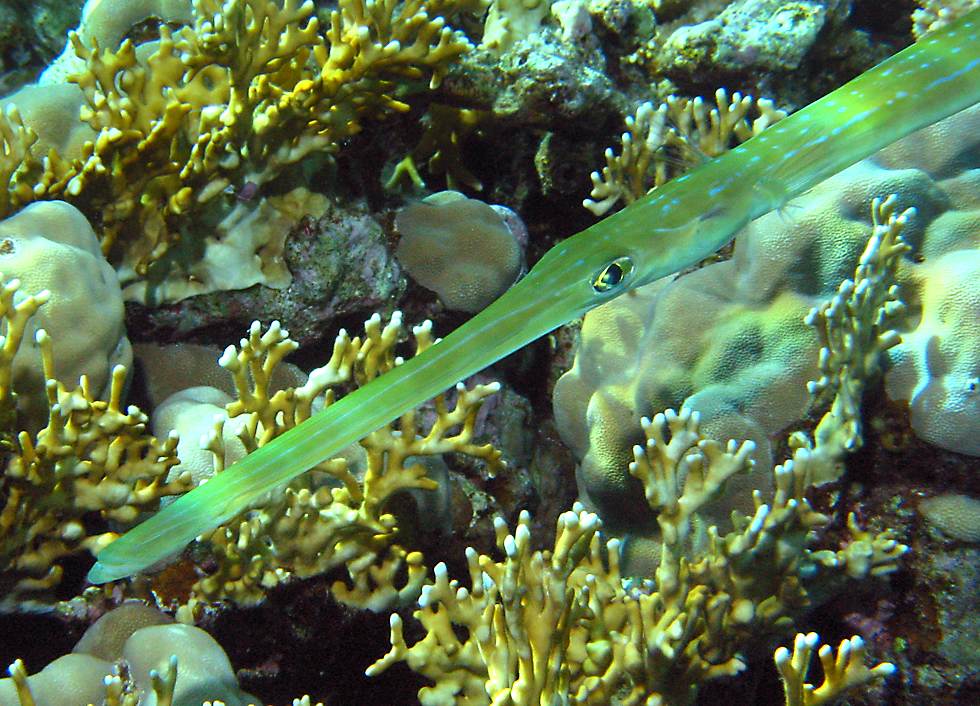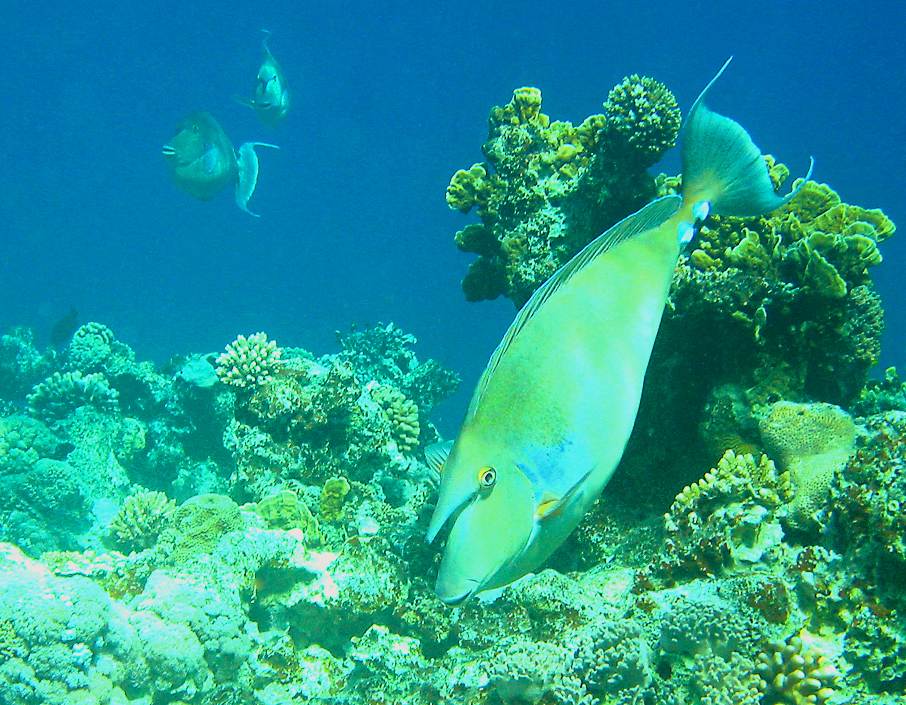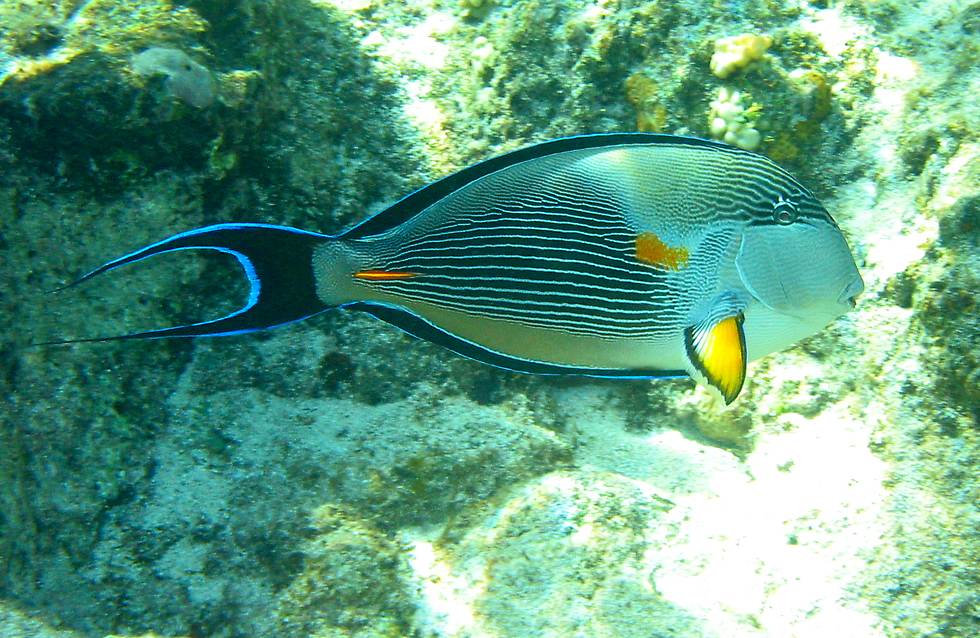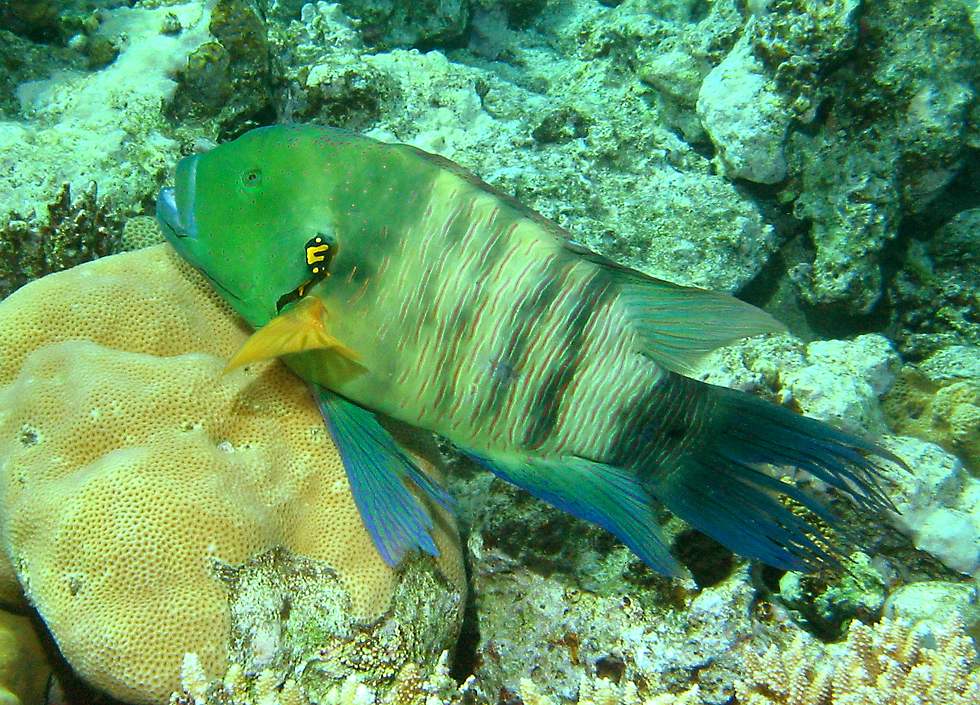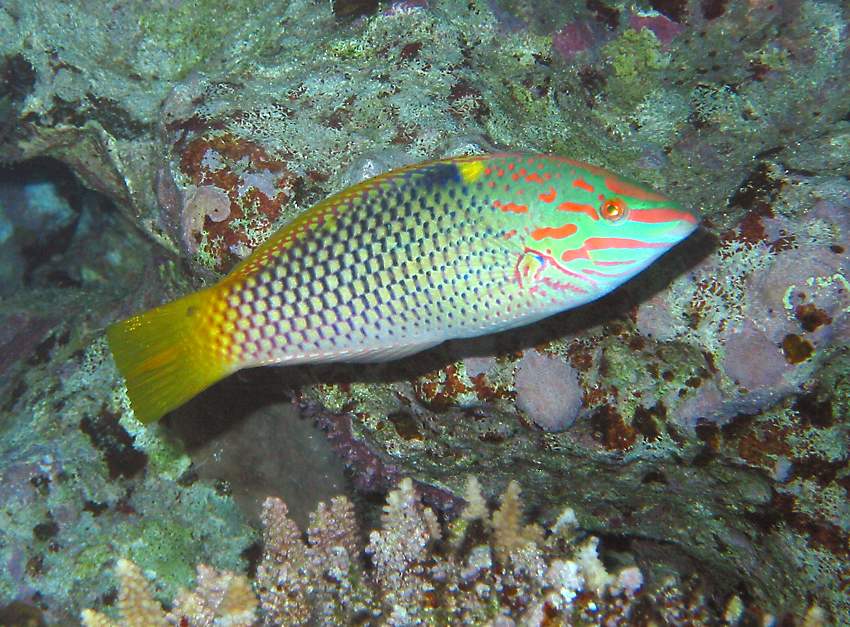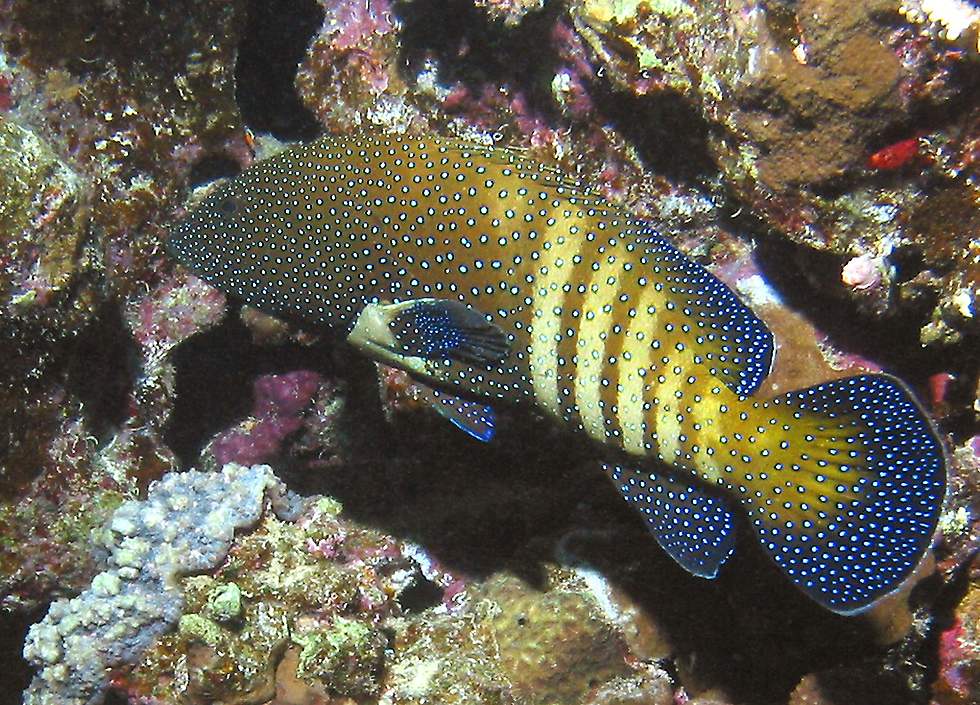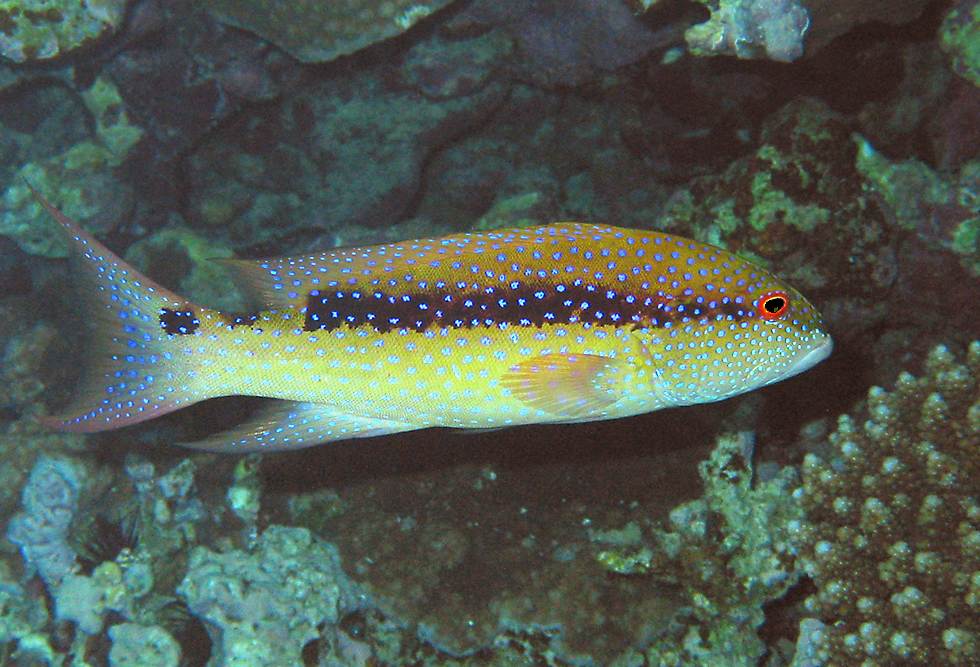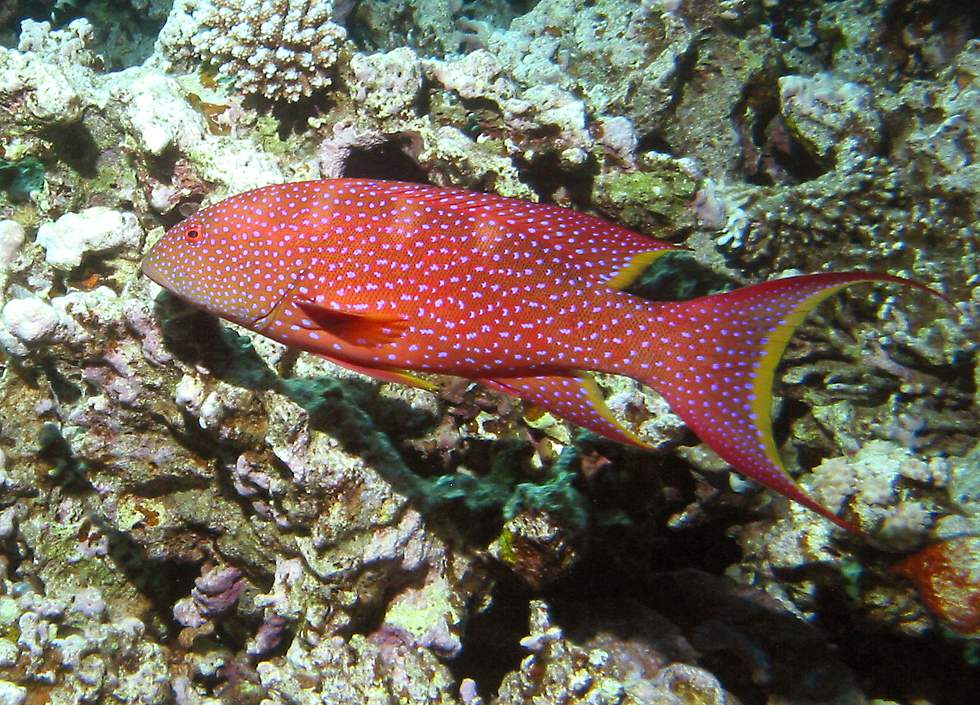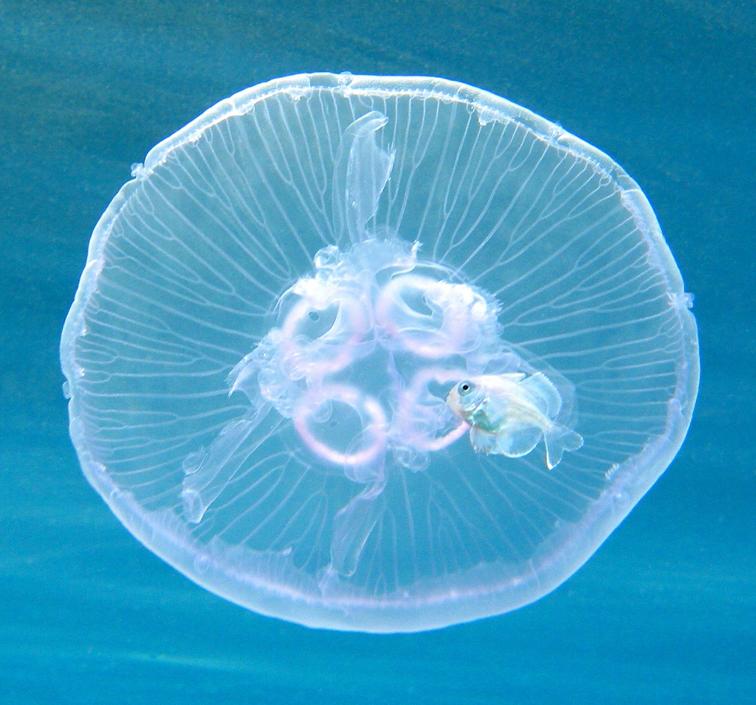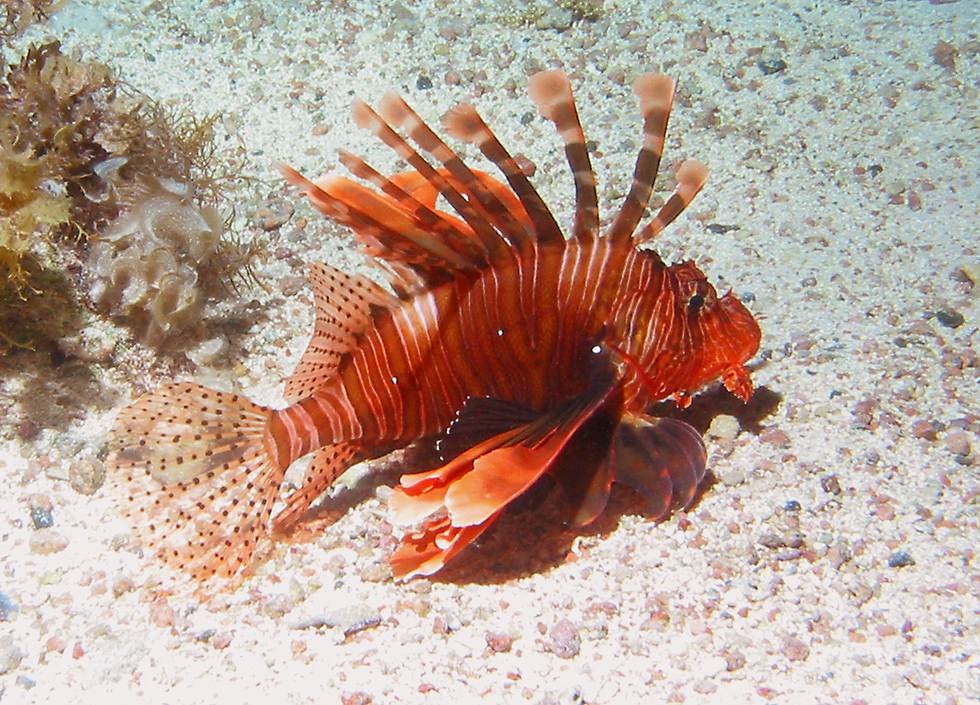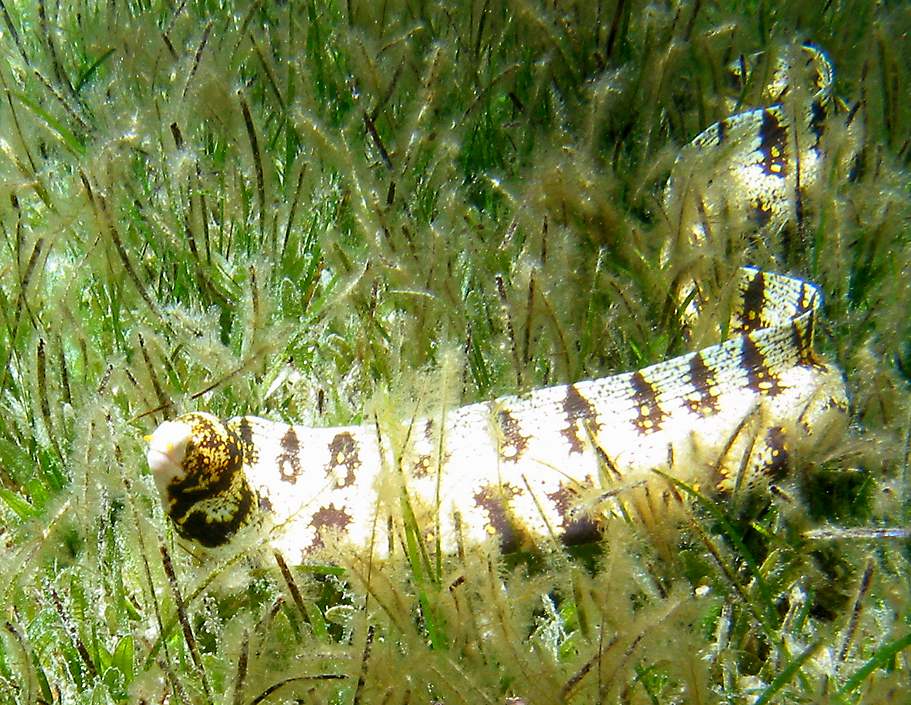Underwater Highlights of Egypt
|
The Picasso triggerfish is by no means the only fish with spectacular colors and patterns - here's an emperor angelfish. They feed mainly on sponges, but will also clean parasites from larger fish. |
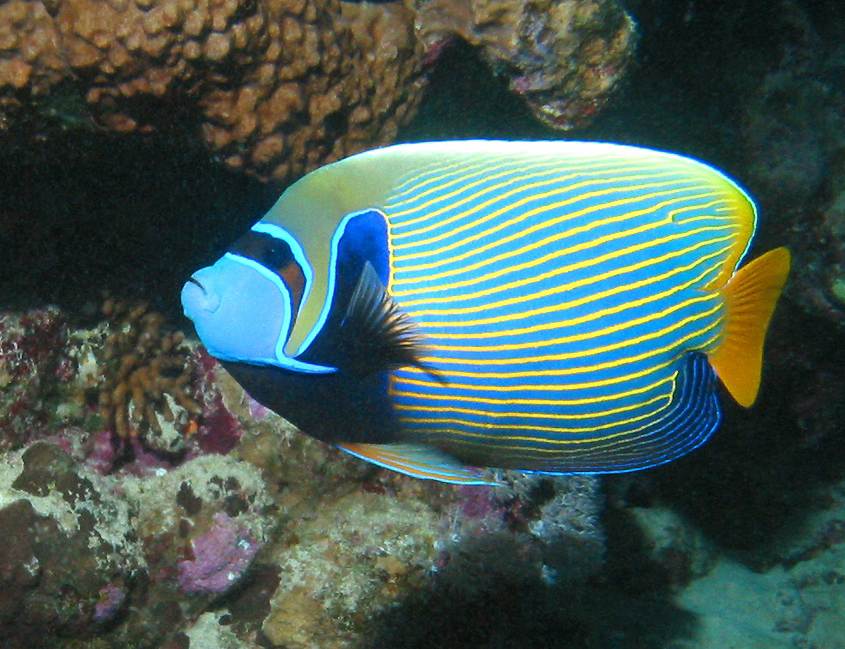
|
|
These Red Sea bannerfish look similar in shape and coloration to the Moorish idol, but belong to a different family of fishes. |
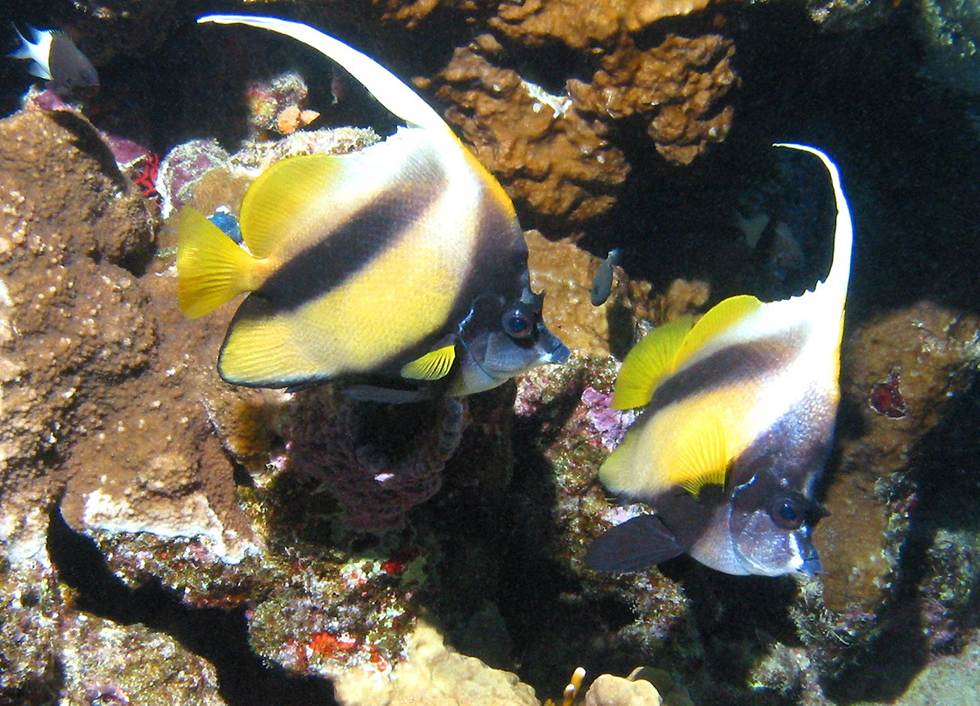
|
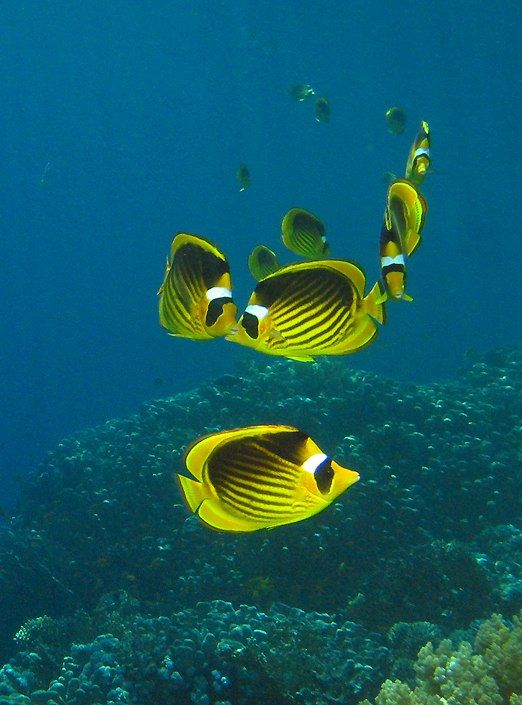
Butterflyfish are usually found in pairs, but here's a collection of 14 or 15 Red Sea raccoon butterflyfish all in the same spot, and arranged very nicely for a photograph. Like most of the photographs on this page, you can click it to bring up a new window with the photograph in computer wallpaper format, to brighten up your day! There are so many different types of butterflyfish in this area that I've created a separate Butterflyfish of the Red Sea page so you can see them all. |
